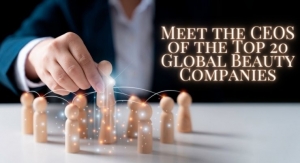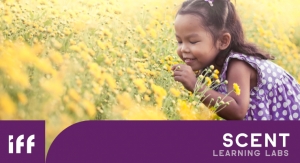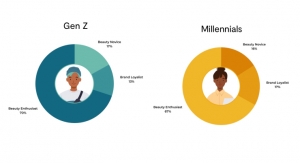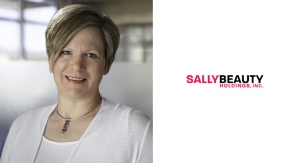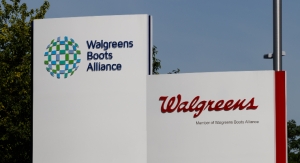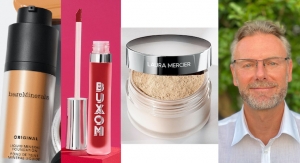Jamie Matusow, Editor-in-Chief , with Joanna Cosgrove, Contributing Editor11.02.18
Update: L’Oréal ranks at #1 on our latest report Top 20 Global Beauty Companies 2021.
L'Oreal is #1 on this year's list of Top Global Beauty Companies.
Below is a look at the company's 2018 highlights, recent acquisitions, best-selling brands, and latest innovations.
Beauty Sales
$31.2 billion
(FY 2017: $27.2 billion)
Key Personnel
Major Products/Brands
Hair care, skin care, sun care, color cosmetics and fragrances sold under 34 brand names in 150 countries, in multiple channels, including Consumer, Professional, Luxury and Active Cosmetics.
Brands include:
New Products
L’Oréal Tops The List, Again
L’Oréal once again heads this year’s list as the Top Global Beauty Brand, with annual FY 2018 Beauty Sales coming in at a whopping $31.2 billion, up $4 billion—a like-for-like sales growth of 4.8%.
Appropriately, chairman and chief executive officer Jean-Paul Agon, when delivering the news, commented: “As people’s desires for beauty grows in multiple ways worldwide, beauty has never looked this good. Market growth accelerated in 2017, stimulated by extremely favourable demographic and sociological developments. In this dynamic market, L’Oréal achieved a great new year in terms of sales and results.”
Agon predicts that the beauty market will continue to grow in the coming years, in part due to “the emergence of the new middle and upper classes who are powerful consumers of beauty, especially of premium products.”
The beauty giant strengthened its position in all categories, channels and regions “that are important for growth”—particularly in makeup and skincare—and particularly in the Luxe arena. In the selective sector, L’Oréal Luxe achieved its strongest growth since 2000, and L’Oréal’s Active Cosmetics Division, with dermocosmetics, surpassed the 2-billion-euro mark. In the New Markets, boosted particularly by the Asia-Pacific Zone, the Group topped 10-billion euros in sales. Rounding out the record-breaking year, e-commerce sales rose by +34%, with online sales of over 2-billion euros. Travel retail was also strong.
All these goals have been achieved, says Agon, while following the shared economic, social and environmental precepts of the Group’s Sharing Beauty With All program, which has the goal to improve the social or environmental impact of 100% of their new or renovated products by 2020; in 2017, 76% of products met this standard. This goes hand-in-hand with L’Oreal’s Universalisation strategy, a global thinking that respects and honors the differences of consumers throughout the world. In 2017, L’Oréal was named one of the world’s Most Ethical Companies by The Ethisphere Institute.
While Agon pointed to L’Oréal Luxe as “delivering spectacular growth, particularly in Asia,” L’Oréal has also been pushing into the luxury segment, with the makeup and fragrance lines for Giorgio Armani, Yves Saint Laurent and Lancome. In general, L’Oreal says the Luxury Cosmetics Market accounts for nearly a quarter (23%) of the total beauty market.
By Operational Division, Consumer Products accounted for 46.6% of sales; L’Oréal Luxe (32.5%); Professional Products (12.9%); and Active Cosmetics (8%). Sales of mass market brands rose 1% while luxury sales grew by 10.6%. Skincare was the largest business segment with 29.3%, followed closely by Makeup (27.9%); Haircare (17.5%), Hair Colour (11.8%), Fragrance (9.2%), and Other (4.3%).
Geographically, the breakdown for 2017 sales was 40.5% New Markets; 31.2% Western Europe; 28.3% North America; 23.6% Asia Pacific; 7.5% Latin America; 6.7% Eastern Europe; 2.7% Africa, Middle East.
2018 Highlights
At the start of 2018, the L’Oréal Group announced receipt of a number of awards gathered in 2017, including recognition of L’Oréal workplace wellness, code of business ethics and efforts to support gender equality, protect the environment and promote innovation.
In January 2018 Bloomberg reported that L’Oréal was using living cells from donors to grow Chinese skin to test and then customize color cosmetics and products such as anti-aging serums, whitening creams, and pollution-fighting cleansers for customers in this expansive market. According to Euromonitor International, cosmetics sales in China are forecast to exceed $40 billion by 2021, surpassing the U.S. as the world’s biggest market for makeup and skin care.
At the CES show in January, L’Oréal advanced its commitment to promoting sun safety with La Roche-Posay UV Sense, the first battery-free wearable electronic UV sensor. The My UV Patch provides consumers with information about their individual ultraviolet exposure levels.
Advancing Acquisitions and Opportunities
Focused on digital acceleration, in March, L’Oréal announced the acquisition of 100% of the Canadian company ModiFace, a specialist in augmented reality and artificial intelligence applied to the beauty industry. ModiFace has developed advanced technologies of 3D virtual makeup, color and skin diagnosis services that track facial features and color. It will be part of L’Oréal’s Digital Services Factory, a dedicated network to design and develop new digital services for the group’s brands.
In May, L’Oréal announced the acquisition of Stylenanda, a Korean fashion and beauty brand, whose 3CE makeup brand accounts for more than 70% of its business. L’Oréal’s plans for the brand, described as “a highly desirable brand among Korean and Chinese Millennials” is for global expansion. Later in the month, L’Oreal snapped up the professional hair color brand Pulp Riot, which launched in the U.S. in June 2016. In 2017, Pulp Riot had net sales of $ 11 million.
Signed in May but not effective until January 1, 2019, L’Oréal gained a worldwide long-term license agreement for the creation, development and distribution of fine fragrances and luxury beauty under the Valentino brand.
In June, the world’s largest cosmetics company signed an agreement with Alibaba Group to strengthen their efforts to reduce waste by committing to use environmentally friendly packaging for all L’Oréal products sold in China within the next five months.
Per the agreement, L’Oréal China pledged to decrease the use of plastic materials for all of its brands by switching to Forest Stewardship Council-certified sustainable paper and zipper paper cartons or paper adhesives. The group also plans to use only 100% recycled boxes by the time this year’s 11.11 Global Shopping Festival arrives in November.
Jet Jing, the head of Alibaba’s B2C marketplace Tmall, said the goal of New Retail is not only to provide Chinese consumers with high-quality products in a fast and convenient manner, but also to create “green, healthy and sustainable social values.”
Similar to other consumers around the world, as Chinese consumers become increasingly eco-conscious, more brands are boasting earth-friendly and energy-efficient products—and are willing to pay more for them.
This is the latest step in an effort launched in May of 2017 when Alibaba and 13 L’Oréal brands, including Kiehl’s, Helena Rubenstein and Giorgio Armani, formed a Green Brand Alliance that required participants to commit to an array of environmentally friendly measures, such as the use of biodegradable packaging materials.
Another acquisition came in August as L’Oréal scooped up Logocos, a German “pioneer” in natural beauty. All the company’s brands are vegan and bio certified with a range of products using their own plant extracts and natural ingredients derived from organic farming. Again, L’Oréal plans to expand the sales of Logocos Naturkosmetik brands internationally.
Looking Ahead
Sales for L’Oréal remained strong for the second quarter of 2018, with sales reported at $7.7 billion for the three-months ended June 30. The L’Oréal Luxe and Active Cosmetics divisions both recorded double-digit growth.
“The good sales growth and the quality of the first-half results reinforce our confidence in our ability to once again outperform the cosmetics market in 2018, and to achieve significant like-for-like sales growth and an increase in our profitability,” said Agon.
Read Next: Unilever is #2
L'Oreal is #1 on this year's list of Top Global Beauty Companies.
Below is a look at the company's 2018 highlights, recent acquisitions, best-selling brands, and latest innovations.
Beauty Sales
$31.2 billion
(FY 2017: $27.2 billion)
Key Personnel
- Jéan-Paul Agon, chairman and chief executive officer
- Laurent Attal, executive vice president, research and innovation
- Vianney Derville, executive vice president, Western Europe zone
- Nicolas Hieronimus, deputy CEO, president L’Oréal Luxe
- Brigitte Liberman, president, active cosmetics division
- Lubomira Rochet, chief digital officer of L’Oréal
- Alexis Perakis-Valat, president, consumer products division
- Alexandre Popoff, executive vice president, Eastern Europe and Africa, Middle East
- Stéphane Rinderknech, chief executive officer, China
- Nathalie Roos, president, professional products division
- Frédéric Rozé, executive vice president, Americas
- Jochen Zaumseil, executive vice president, Asia-Pacific
Major Products/Brands
Hair care, skin care, sun care, color cosmetics and fragrances sold under 34 brand names in 150 countries, in multiple channels, including Consumer, Professional, Luxury and Active Cosmetics.
Brands include:
- Garnier, L’Oréal Paris, Maybelline, Urban Decay
- NYX, Soft-Sheen-Carson, Kerastase, Redken
- Matrix, Valentino, Lancôme, Biotherm
- Helena Rubenstein, Kiehl’s, Ralph Lauren
- Cacharel, Viktor & Rolf, Giorgio Armani
- Diesel, YSL Beauté, Vichy
- LaRoche-Posay, SkinCeuticals, Sanoflore
- IT Cosmetics, Stylenanda
- Pulp Riot, ModiFace, CeraVe and Logocos
New Products
- Garnier Fructisse Smoothing Treat Hair Mask
- Vichy Minéral 89
- Urban Decay Born to Run Eyeshadow Palette
- LaRoche-Posay Lipikar Stick AP+
- Lancôme Monsieur Big Mascara
- Lancôme Juicy Shaker lipsticks
- Lancôme Advanced Génifique Sensitive Dual Concentrate
- Biolage R.A.W.
- Maison Margiela La Vie est Belle Magic Retouch
- Colorista
- YSL Touche Eclat Glow Shot Liquid Highlighter
- Giorgio Armani Code Pour Femme
L’Oréal Tops The List, Again
L’Oréal once again heads this year’s list as the Top Global Beauty Brand, with annual FY 2018 Beauty Sales coming in at a whopping $31.2 billion, up $4 billion—a like-for-like sales growth of 4.8%.
Appropriately, chairman and chief executive officer Jean-Paul Agon, when delivering the news, commented: “As people’s desires for beauty grows in multiple ways worldwide, beauty has never looked this good. Market growth accelerated in 2017, stimulated by extremely favourable demographic and sociological developments. In this dynamic market, L’Oréal achieved a great new year in terms of sales and results.”
Agon predicts that the beauty market will continue to grow in the coming years, in part due to “the emergence of the new middle and upper classes who are powerful consumers of beauty, especially of premium products.”
The beauty giant strengthened its position in all categories, channels and regions “that are important for growth”—particularly in makeup and skincare—and particularly in the Luxe arena. In the selective sector, L’Oréal Luxe achieved its strongest growth since 2000, and L’Oréal’s Active Cosmetics Division, with dermocosmetics, surpassed the 2-billion-euro mark. In the New Markets, boosted particularly by the Asia-Pacific Zone, the Group topped 10-billion euros in sales. Rounding out the record-breaking year, e-commerce sales rose by +34%, with online sales of over 2-billion euros. Travel retail was also strong.
All these goals have been achieved, says Agon, while following the shared economic, social and environmental precepts of the Group’s Sharing Beauty With All program, which has the goal to improve the social or environmental impact of 100% of their new or renovated products by 2020; in 2017, 76% of products met this standard. This goes hand-in-hand with L’Oreal’s Universalisation strategy, a global thinking that respects and honors the differences of consumers throughout the world. In 2017, L’Oréal was named one of the world’s Most Ethical Companies by The Ethisphere Institute.
While Agon pointed to L’Oréal Luxe as “delivering spectacular growth, particularly in Asia,” L’Oréal has also been pushing into the luxury segment, with the makeup and fragrance lines for Giorgio Armani, Yves Saint Laurent and Lancome. In general, L’Oreal says the Luxury Cosmetics Market accounts for nearly a quarter (23%) of the total beauty market.
By Operational Division, Consumer Products accounted for 46.6% of sales; L’Oréal Luxe (32.5%); Professional Products (12.9%); and Active Cosmetics (8%). Sales of mass market brands rose 1% while luxury sales grew by 10.6%. Skincare was the largest business segment with 29.3%, followed closely by Makeup (27.9%); Haircare (17.5%), Hair Colour (11.8%), Fragrance (9.2%), and Other (4.3%).
Geographically, the breakdown for 2017 sales was 40.5% New Markets; 31.2% Western Europe; 28.3% North America; 23.6% Asia Pacific; 7.5% Latin America; 6.7% Eastern Europe; 2.7% Africa, Middle East.
2018 Highlights
At the start of 2018, the L’Oréal Group announced receipt of a number of awards gathered in 2017, including recognition of L’Oréal workplace wellness, code of business ethics and efforts to support gender equality, protect the environment and promote innovation.
In January 2018 Bloomberg reported that L’Oréal was using living cells from donors to grow Chinese skin to test and then customize color cosmetics and products such as anti-aging serums, whitening creams, and pollution-fighting cleansers for customers in this expansive market. According to Euromonitor International, cosmetics sales in China are forecast to exceed $40 billion by 2021, surpassing the U.S. as the world’s biggest market for makeup and skin care.
At the CES show in January, L’Oréal advanced its commitment to promoting sun safety with La Roche-Posay UV Sense, the first battery-free wearable electronic UV sensor. The My UV Patch provides consumers with information about their individual ultraviolet exposure levels.
Advancing Acquisitions and Opportunities
Focused on digital acceleration, in March, L’Oréal announced the acquisition of 100% of the Canadian company ModiFace, a specialist in augmented reality and artificial intelligence applied to the beauty industry. ModiFace has developed advanced technologies of 3D virtual makeup, color and skin diagnosis services that track facial features and color. It will be part of L’Oréal’s Digital Services Factory, a dedicated network to design and develop new digital services for the group’s brands.
In May, L’Oréal announced the acquisition of Stylenanda, a Korean fashion and beauty brand, whose 3CE makeup brand accounts for more than 70% of its business. L’Oréal’s plans for the brand, described as “a highly desirable brand among Korean and Chinese Millennials” is for global expansion. Later in the month, L’Oreal snapped up the professional hair color brand Pulp Riot, which launched in the U.S. in June 2016. In 2017, Pulp Riot had net sales of $ 11 million.
Signed in May but not effective until January 1, 2019, L’Oréal gained a worldwide long-term license agreement for the creation, development and distribution of fine fragrances and luxury beauty under the Valentino brand.
In June, the world’s largest cosmetics company signed an agreement with Alibaba Group to strengthen their efforts to reduce waste by committing to use environmentally friendly packaging for all L’Oréal products sold in China within the next five months.
Per the agreement, L’Oréal China pledged to decrease the use of plastic materials for all of its brands by switching to Forest Stewardship Council-certified sustainable paper and zipper paper cartons or paper adhesives. The group also plans to use only 100% recycled boxes by the time this year’s 11.11 Global Shopping Festival arrives in November.
Jet Jing, the head of Alibaba’s B2C marketplace Tmall, said the goal of New Retail is not only to provide Chinese consumers with high-quality products in a fast and convenient manner, but also to create “green, healthy and sustainable social values.”
Similar to other consumers around the world, as Chinese consumers become increasingly eco-conscious, more brands are boasting earth-friendly and energy-efficient products—and are willing to pay more for them.
This is the latest step in an effort launched in May of 2017 when Alibaba and 13 L’Oréal brands, including Kiehl’s, Helena Rubenstein and Giorgio Armani, formed a Green Brand Alliance that required participants to commit to an array of environmentally friendly measures, such as the use of biodegradable packaging materials.
Another acquisition came in August as L’Oréal scooped up Logocos, a German “pioneer” in natural beauty. All the company’s brands are vegan and bio certified with a range of products using their own plant extracts and natural ingredients derived from organic farming. Again, L’Oréal plans to expand the sales of Logocos Naturkosmetik brands internationally.
Looking Ahead
Sales for L’Oréal remained strong for the second quarter of 2018, with sales reported at $7.7 billion for the three-months ended June 30. The L’Oréal Luxe and Active Cosmetics divisions both recorded double-digit growth.
“The good sales growth and the quality of the first-half results reinforce our confidence in our ability to once again outperform the cosmetics market in 2018, and to achieve significant like-for-like sales growth and an increase in our profitability,” said Agon.
Read Next: Unilever is #2










